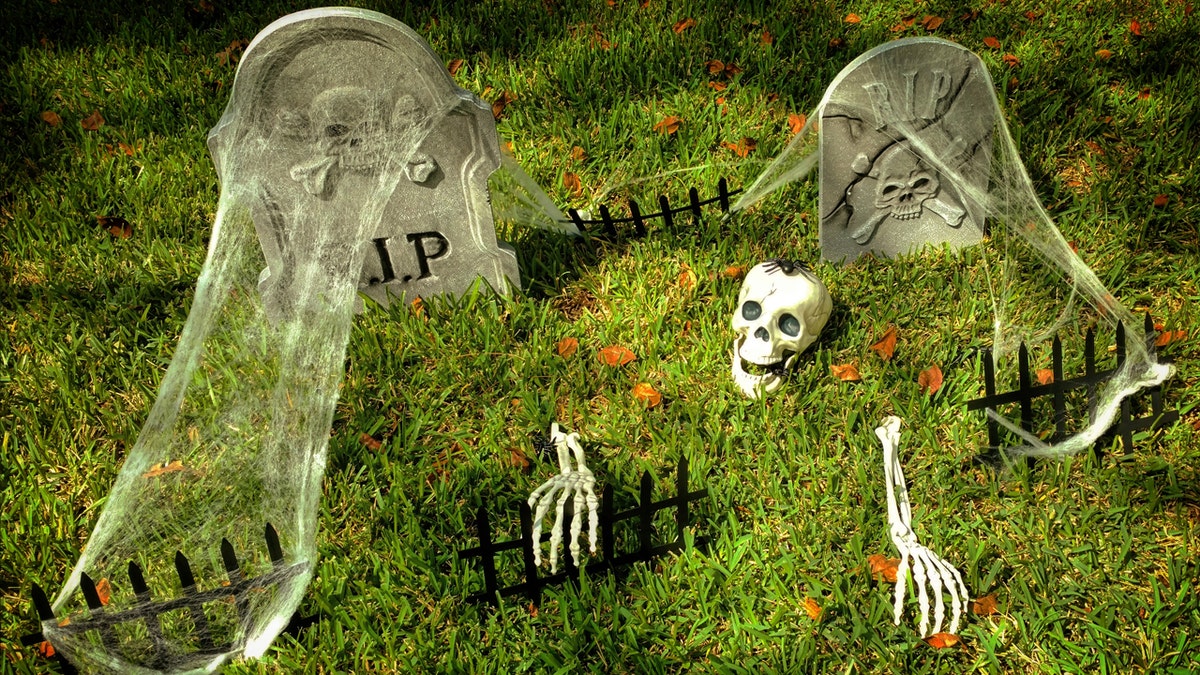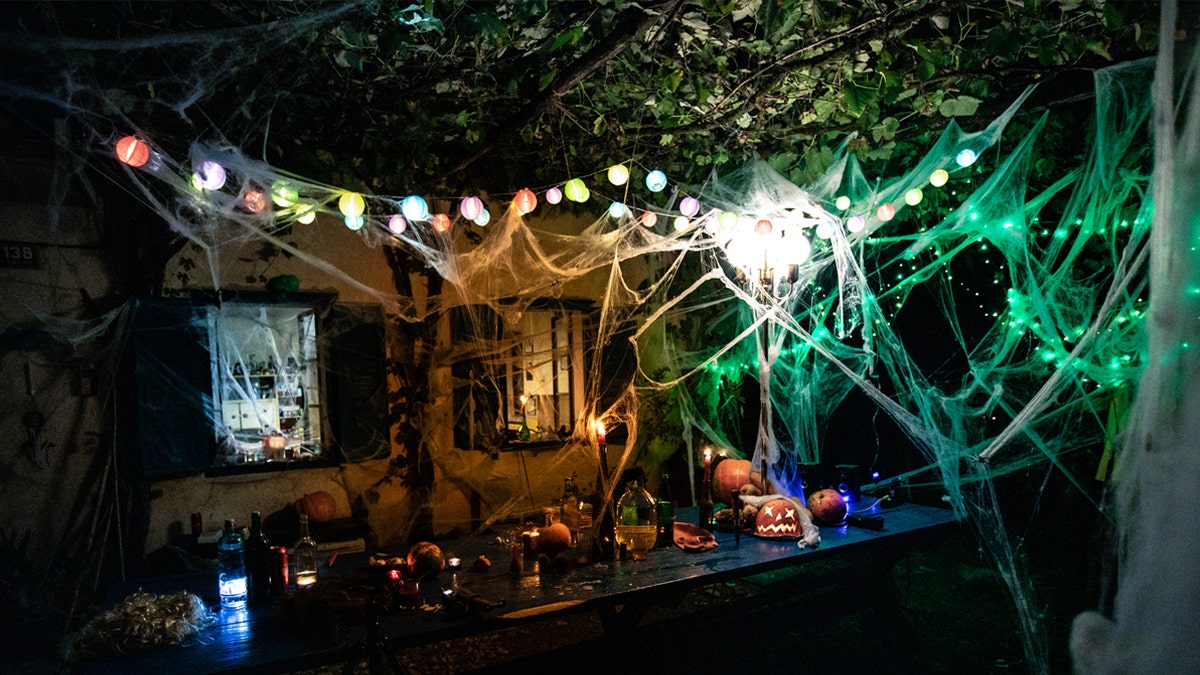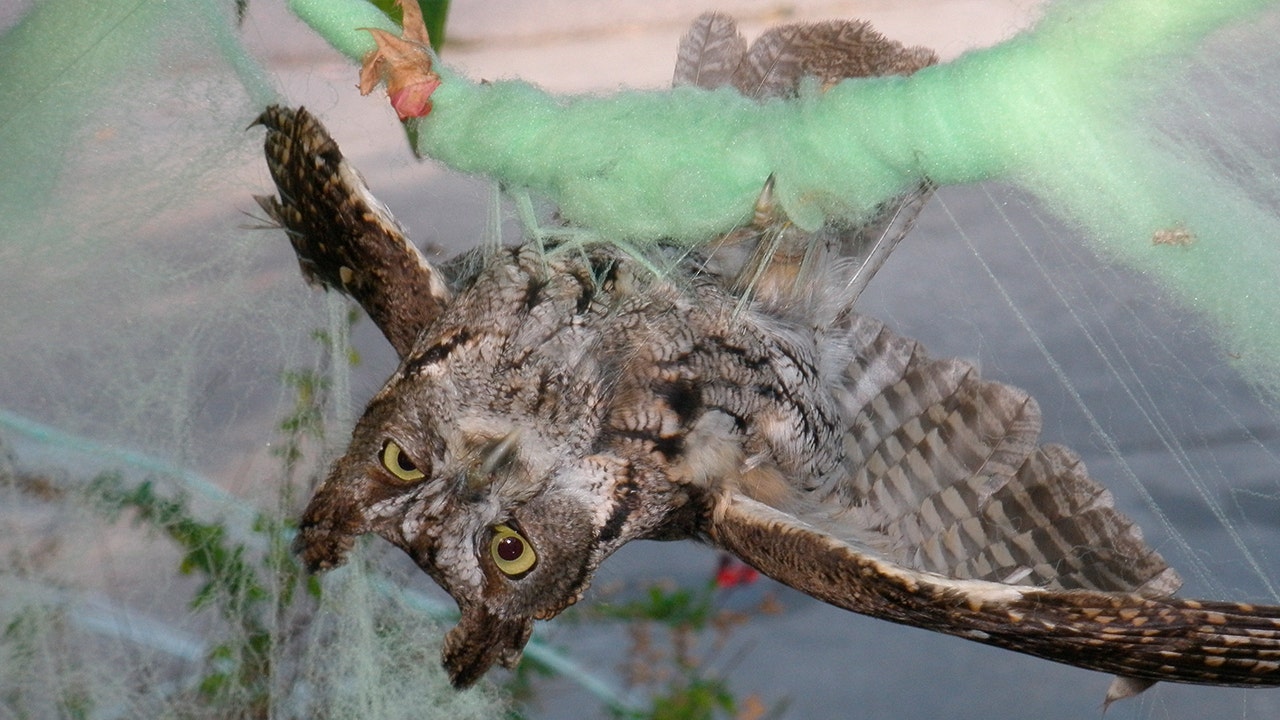Fox News Flash top headlines for September 24
Fox News Flash top headlines are here. Check out what's clicking on Foxnews.com.
With Halloween a few weeks away, wildlife experts throughout the country want the public to know there's a decoration that could pose hazards for birds, bugs and other animals when it's set up outside.
In Nebraska, officials with the Nebraska Wildlife Education group are warning residents that fake spider webs can entangle hummingbirds, owls, butterflies, bees and small critters.
"Often, the creatures moving through the bushes or trees decorated with this material can get caught, resulting in the animals dying of injury, starvation or predation unless they are rescued and rehabilitated," Amber Schiltz, interim division administrator of the Nebraska Game & Parks Commission’s (NGPC) Fish & Wildlife Education Division, wrote in an email to Fox News Digital.
HALLOWEEN DECOR SWARMS SHELVES IN SUMMER, AND SOCIAL MEDIA USERS SOUND OFF: 'ALREADY?!'
Synthetic spider web decorations are made with plastic-based materials that aren’t biodegradable, which could pose a threat to wildlife if winds blow the fake webbing to other areas, according to Schiltz.

Halloween spider web decorations are typically made from synthetic fibers that don't break down easily. Fake spider webs are used to decorate outdoor trees and bushes during the Halloween season. (iStock)
She noted that fake spider webs also don’t break as easily as real spider webs.
"These spider web decorations trap creatures by entangling their wings and limbs," Schiltz wrote.
Halloween celebrants typically hang fake spider webs on the exterior of their homes or landscaping each fall.
HALLOWEEN QUIZ! HOW WELL DO YOU KNOW THESE SURPRISING FACTS ABOUT THE SPOOKY HOLIDAY?
Animal care experts with the Nebraska Wildlife Rehab in Omaha have observed juvenile squirrels getting entangled in fake spider webs when parent squirrels use the decorative material in burrows for winter nesting, according to Schiltz.
In recent years, wildlife rehab centers throughout the country have seen an increased number of entangled animals and insects, including warblers, hummingbirds, screech owls, dragonflies and butterflies, according to Schiltz.
The life-threatening entanglements are happening because the Halloween-decorating season "overlaps with key migration periods," which affects creatures who "rely on urban areas as part of their habitat," she explained.
Statistics on how many animals and insects are trapped in fake spider webs aren’t readily available, but wildlife experts and environmental watchdogs have also made announcements about the dangers the decorations pose to small wildlife.
"Fake spiderweb decorations kill birds."
Those who run the Facebook page Help Save Our Hummingbirds HSOH, which has 56,000 followers, issued a warning Sept. 2.
"Halloween is fast approaching. Please be mindful on how you decorate outside," the group wrote.
THE EXORCIST, CHUCKY AND NEW HORRIFIC HAUNTS HIT UNIVERSAL STUDIO'S HALLOWEEN HORROR NIGHTS
"The fake webbing is horribly dangerous for wildlife. Fake spiderweb decorations kill birds. It's strong enough to snare an owl and takes a terrible toll every October on small birds," the post added.
"They get tangled up in it and cannot get out, therefore leading to a slow, agonizing death … In warmer climates, flowers may still be blooming, and bees are still out, the fake webbing can be deadly to them too, as well as butterflies and still migrating hummingbirds."

Wildlife experts warn Halloween spider web decorations can entangle small animals and insects, which can have deadly consequences. (iStock)
WildCare, a nonprofit organization and wildlife hospital in San Rafael, California, reports that it treats dozens of animal patients for entanglement injuries, according to an article the group published, "Keep Halloween Safe for Wildlife."
The wildlife hospital urges home decorators to refrain from using fake spider webs or placing garden netting or webbing in yards to avoid entanglement risks.
If fake webs or nets are already set, WildCare suggests home decorators check their webbing or netting twice a day for trapped animals.

Halloween decorators often place fake spider webs outside, but wildlife experts generally advise against this. (iStock)
The University of Illinois Urbana-Champaign’s College of Veterinary Medicine — Wildlife Medical Clinic also advises Halloween decorators to ditch fake spider webs, according to the school’s "Wildlife Friendly Halloween Decorations" from 2020.
Halloween spider web decor: What to do instead?

Each year, festive families in the United States come together and decorate their homes for Halloween. (iStock)
Some Halloween decorators may find it difficult to let go of their spooky home furnishings.
CLICK HERE TO SIGN UP FOR OUR LIFESTYLE NEWSLETTER
Schiltz told Fox News Digital there are three options decorators can consider if they want to practice wildlife-friendly decorating.
1. Place fake webs indoors
Halloween decorators who feel they can’t part with their fake spider webs can safely place them inside their home, including their interior front windows.
2. Replace fake webs with other decorations
Decorators can consider thicker rope-like decorations and similar ornaments that don’t entangle birds, small mammals and insects.

Wildlife experts say there are many Halloween decorations available that don't pose entanglement risks. (iStock)
3. Let spiders build real webs
If spiders are around, decorators can let the insects build their own webs, which offer natural pest control and a "spooky" ambiance, according to Schiltz.
CLICK HERE TO GET THE FOX NEWS APP
"As someone who loves Halloween almost as much as I love animals, my suggestion would be [to find] a balance [between] the materials we’re putting out for decorations and remembering our nature neighbors we’re fortunate to share our space with," she wrote.
For more Lifestyle articles, visit www.foxnews.com/lifestyle.



